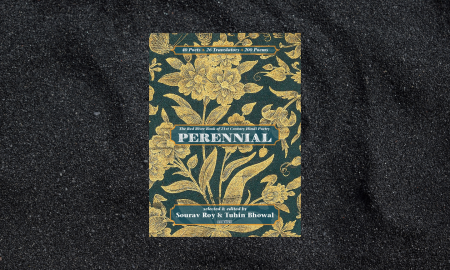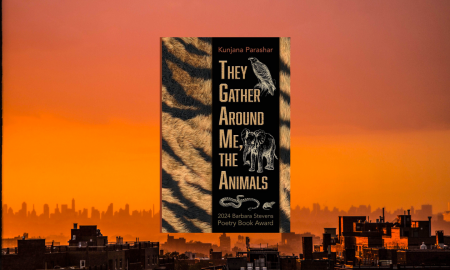A long weekend in New Orleans immersed me in a world populated by exceptional music at every turn, except, perhaps in the hotel restaurant. Jazz, particularly a Dixieland clarinetist in an intimate setting, launched my imagination into woodwind reverie.
I sat on a cushion at the feet of the clarinetist. There, under the bell of his clarinet, I could hear everything: his riffs, his fills, and his super-high Ds and Es. I am not exaggerating about how close I was. I had to keep pulling in my folded legs so that he wouldn’t step on me. I was at Preservation Hall in New Orleans, a revered jazz venue founded in 1961 where one goes to hear traditional (“Dixieland”) jazz. It was thrilling to sit in that spot, inside the music as it was performed. I could hear the musicians deciding on keys (“2 flats!”) and who would sing if there were lyrics (the trombonist sang “Bill Bailey”). Most of the audience would not have heard that communication between musicians. Also, while I could hear each instrument distinctly from my cushion-spot, the jazz aficionados on the benches would have heard more of a blend of the players.
This was the second time that long weekend in June that I was hearing jazz at Preservation Hall in New Orleans. My librarian office-mate, Jackie, and I were in New Orleans for a conference in June and caught the 10:00pm show that Thursday. We waited in line outside the venue for 45 minutes in the hot, saturated Louisiana air to get seats on rustic benches, wondering if the wait was worth it. After we were seated, the clarinet, tenor sax, trumpet, trombone, drum, and piano players calmly, almost somberly, entered the room (there’s no stage), and took their places. Did they have enough energy, enough VERVE, to play this show, the last of five for the evening? It was worth the wait in the St. Peter’s Street sauna. The musicians came alive once they started playing “Little Liza Jane.” “Bourbon Street Blues,” “You Scream, I Scream, We All Scream for Ice Cream,” and “Indiana” were part of the hour-long set performed by the group known as the Preservation Hall All-Stars. The trumpet, trombone, saxophone, and clarinet players, (the horns), started each of their solos seated and would stand around halfway through. The timbre or tone of the music became gutsier upon standing because a person’s breathing apparatus is better able to support speaking, singing, and wind instrument playing in a standing position. The audience heard that nuance, and every time a player stood, they’d clap and hoot. At the end, all the horn players stood, reminding me of the “company front” formation we did in high school marching band as part of big endings. All musicians, elbow-to-elbow, facing front and playing the daylights out of whatever tune it was and overwhelming the audience with the loudest music they’d heard so far. The Preservation Hall All-Stars did something like that, but traded in some of the ‘loud’ for style.
A jazz solo is usually improvised. The soloist may create an entirely new melody from scratch, or may weave in fragments of well-known tunes. (That’s called quoting and has been around for centuries.) I remember my jazz-major friends back in college: “I have to learn (John) Coltrane’s ‘Giant Steps’ solo in every key.” That is complex stuff. Once it is learned, though, it can be quoted or lifted in its entirety. It’s possible that only jazz aficionados will recognized a quoted or paraphrased tune, but coherent melodies add depth and interest to the solo even to dilettante ears. This is so far away from the classical training I received I can only ask: HOW DO THEY DO THAT? My guess is that after playing these solos repeatedly, the notes, phrases, and elements of style take on relationships to each other and fall into place. I imagine the player thinking something like this: “I’m playing the Coltrane quote now and it will end on E, so next comes the glissando part and it will therefore begin on G.” Of course they don’t take the time to reason this stuff out in English, and they most likely don’t have names for the parts, but they probably have mental pictures of the music and fingerings or slide positions in their minds. After years of practice, I got to where the note on the page went through a clarinet fingering visual in my mind directly to my fingers making the note, bypassing conscious thinking about where to put my fingers. My best guess is that jazz players do something like this for whole solos. I should ask some.
“I don’t see any pictures, Margaret. I know some guys see colors, though,” Philadelphia guitarist John Sheridan told me the other day. “Lots of times I’m thinking about how I’ll develop an idea as I play.” I got the idea that John is so fluent in this jazz language that the notes themselves are suggesting the possible developments to his fingers. “I go into a Zen place where I’m looking down on myself and the other musicians playing. I’m not actually playing the music but watching myself play it.” I asked where inspiration for these on-the-spot solos comes from. “I follow the lead of the other musicians and sometimes borrow their riffs, or pieces of their riffs to develop. I feed off the audience, too.” On the subject of John Coltrane’s “Giant Steps,” John Sheridan confided this: “You know ‘Trane shedded (short for “woodshedded,” meaning practiced) that solo for a year before he brought it out! He didn’t make that up on the spot.”
Another guitar player, Damon Hunnicutt, compared soloing to classical music which he knows is my language. “The closest thing I can think of is a cadenza. The soloist might know about what they are going to do, and base the improvisation on melodies from the piece as composed.” And just as with classical music, Damon said, the performer has to be well-acquainted with the music’s history. They want their performance, and more crucially their solo, to fit into the style of the piece. Listeners will know when a Bebop solo doesn’t fit into a Dixieland performance. Classical players call this area of performance study HIP, or Historically-Informed Performance. It sounds like jazz musicians study the history of jazz the same way.
Playing an instrument without written music was, for me, like cooking without a recipe or sewing without a pattern. I lacked confidence. This then, was my downfall in high school jazz band. I could play any of the “charts” put in front of me, but any improvised solos would go to the guys on either side of me. Nevertheless, when I hear a clarinetist play an improvised solo, it is like hearing my own voice doing stuff my voice never did.
As part of my quest to understand the cognitive processes of improvisation, I reverted to my Librarian persona and dug up a scholarly, peer-reviewed article about teaching kids to improvise. (This is why there’s an endnote at the end of this essay.) The author, Michael C. Palmer, seemed to have similar questions to mine, and identified seven levels of improvisation:
- Exploration
- Process-oriented improvisation
- Product-oriented improvisation
- Fluid improvisation
- Structural improvisation
- Stylistic improvisation
- Personal improvisation
As musicians develop skills, muscle memory, and knowledge, they move between the levels. As a kid, I missed the boat on this completely, and I take no comfort in Palmer’s eventual conclusion, pages later, that improvisation is a high-level teachable skill. At least I kind of understand the process.
***
New Orleans is my Florida, and the French Quarter is my Disney World. Its soundtrack includes the tuba, trumpet, and drums jamming at Jackson Square, the jazzy music spilling out the doors and windows of the bars on Bourbon Street, and the second-hand sounds of a wedding cover band from downstairs in my hotel between Bourbon and Royal streets on a Saturday night as I attempted to write. That particular evening I had ventured out to the corner grocery on Royal, and stumbled upon two wedding parades escorted by motorcycle policemen on the streets surrounding my hotel. The cops know ahead of time where the parades will assemble, because the couple will have filed an application for a permit. The musicians, usually a brass band, walk behind the motorcycle cops, then come the wedding VIPs featuring bride and groom, and then all of the wedding guests. Many hold decorated parasols or handkerchiefs which are incorporated into their joyful strut. This parade is called a Second Line and its purpose is to escort the couple from the church to the reception venue with the band providing a soundtrack. Further up Royal Street, I found a musical ventriloquist with a country twang and a colorfully costumed dummy singing country standards. I tipped him handsomely for the privilege of taking a photo of him with his colorful puppet. Music, good music, is everywhere.
Even when I left the French Quarter I found music surrounding me. Stopping for a cheeseburger at the World War II Museum’s canteen one day, I was impressed by the piano man entertaining us with era-specific standards. Further afield, on a Cajun swamp tour, I noticed an extra spring in my step from the Cajun music played in the gift shop. I don’t usually hear Cajun music anywhere else but my house. It’s a great accompaniment to housework.
I stayed on for a couple of extra days after my conference friends left so that I could visit the World War II Museum and take a tour through a swamp not far from where my father spent the first eight years of his life. I had never been, and I was surprised to notice that the Cajun swamp looked a lot like the wilder areas of my hometown, but with alligators. We saw seven from the flat-bottomed tour boat. Back at the hotel, I felt like a lone female traveler in an old movie, staying in a distinctive, possibly haunted, hotel, and making a glamorous entrance each evening in the hotel’s in-house dining room. Perhaps I was Ingrid Bergman in Casablanca, Grace Kelly in To Catch a Thief, or maybe even clever Miss Marple solving a mystery while knitting. Despite the grand appearance of the dining room, the dining experience was unremarkable. I’m focusing on the optics here. The breakfast buffet was notable, but far too crowded for me to pretend to be Ingrid, Grace, or Miss Marple. I took home some culinary ideas from NOLA including DIY infused water with oranges, lemons or cucumbers in a glass pitcher, and that pasta dish from Café Amelie. I could try those without recipes, maybe. The hotel restaurant was the only place where I don’t remember music.
***
After almost all of my New Orleans adventures were behind me, I decided to go stand in line for another Preservation Hall concert. The 5:00 Sunday concert (the evening’s second) drew a long line and lots of those people had paid extra for reserved seats on those rustic benches. I thought about those cushions nearer to the musicians. Wait, I thought. I should sit on one of those, right in front of the clarinetist. I was close enough to the front of the line that I had my choice of cushions. I chose the one right in front of where the clarinetist performed on Thursday evening. I would have to tuck my legs under me or in front of me because the musicians’ collection of wooden chairs were inches away from where my cushion ended. The musicians entered, and I was happy to see they were mostly the same guys as Thursday evening, chill and expressionless. This Sunday audience, however, was livelier, and frequently sent tips up to the guys for requests. The going rate for a request was ten dollars but “When the Saints Go Marching In” was twice that. We heard “Little Liza Jane” again that night, “My Bucket’s got a Hole,” “Bill Bailey,” and finally an exuberant “Saints.”
Guitarist John Sheridan shared some insight on this situation: “Those traditional guys in New Orleans only play the old stuff (Dixieland standards) and they know those tunes and chord progressions inside-out and upside-down. They never play the same solo twice.” I imagined that the notes and chords are in their muscle memory, and John agreed. He said they are totally playing by ear, with little conscious “thinking.” They re-use riffs but alter them in some unexpected way to surprise listeners. That way, the old, familiar music stays fresh.
As I listened to the music, I could hear the clarinet over the other instruments because of my location at the player’s feet. His riffs, glisses, and fills swirled around my head, sounding like my voice singing music I never, and could never, sing. I had the impression of being inside not only the music, but inside the group of men who communicated in musical shorthand about the details of each tune. Every time the clarinetist stood up for a solo, I had to retract my feet so that he wouldn’t step on me. My legs cramped a little. I didn’t want to move from that magical spot, ever.
After the concert, I shook the clarinetist’s hand and told him that the clarinet sounds to me like my own voice, but that I could never play those licks. As the words came out of my mouth, I imagined that he probably hears this kind of drivel often from amateur musicians who think their story is special. My story is special, because it’s mine from my own experience, and I’ve thought so much about what playing the clarinet looks like inside my head while I’m doing it. But that New Orleans clarinetist had to prepare for the 6:00 show and I moved on, shaking the hands of the saxophone and trumpet players as I left.
There’s a string of Mardi Gras beads hanging off a knob on my dresser. They are mostly gold-colored with a few greens and purples in the section where three plastic musical instruments hang: a flattened trombone, a tiny saxophone, and a huge trumpet. I bought the beads at the airport, partly because their gaudiness amused me, but also because I was still smiling from my jazzy New Orleans experience. I have other memories from that long weekend, some happy, some anxious, some weather-related, and one delivered by Facebook so hurtful that it would haunt me for the rest of the summer and beyond. When I look at those beads with the odd-sized instruments I remember sitting at the feet of a virtuoso clarinetist in Preservation Hall swept up into the music while he played my horn and sang with my voice.
***
Photo by Jens Thekkeveettil on Unsplash





